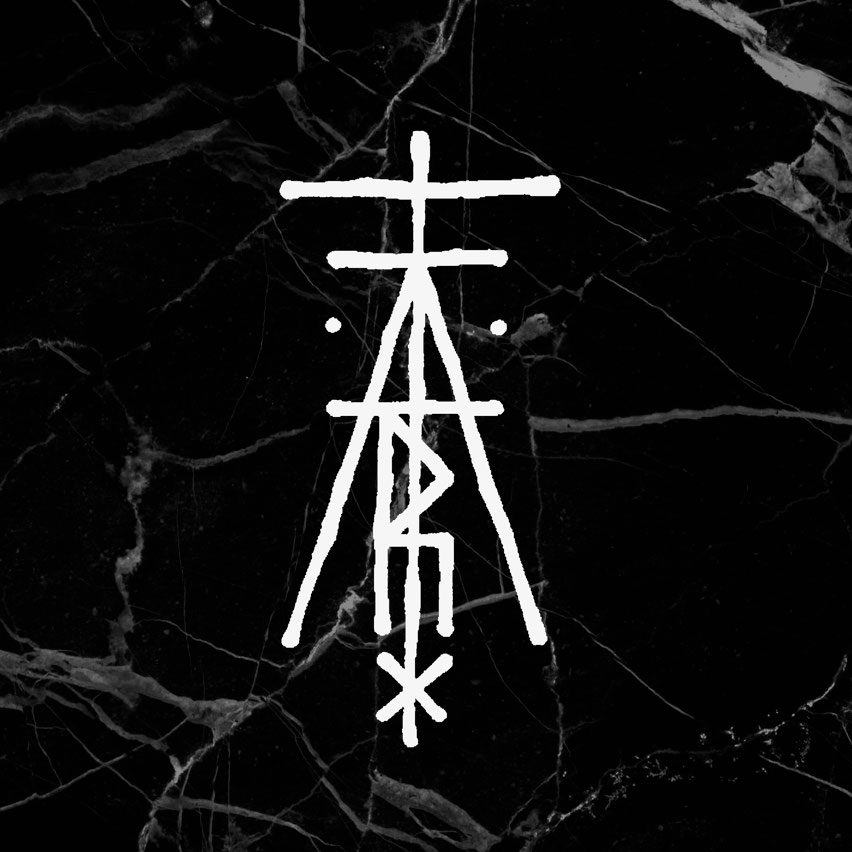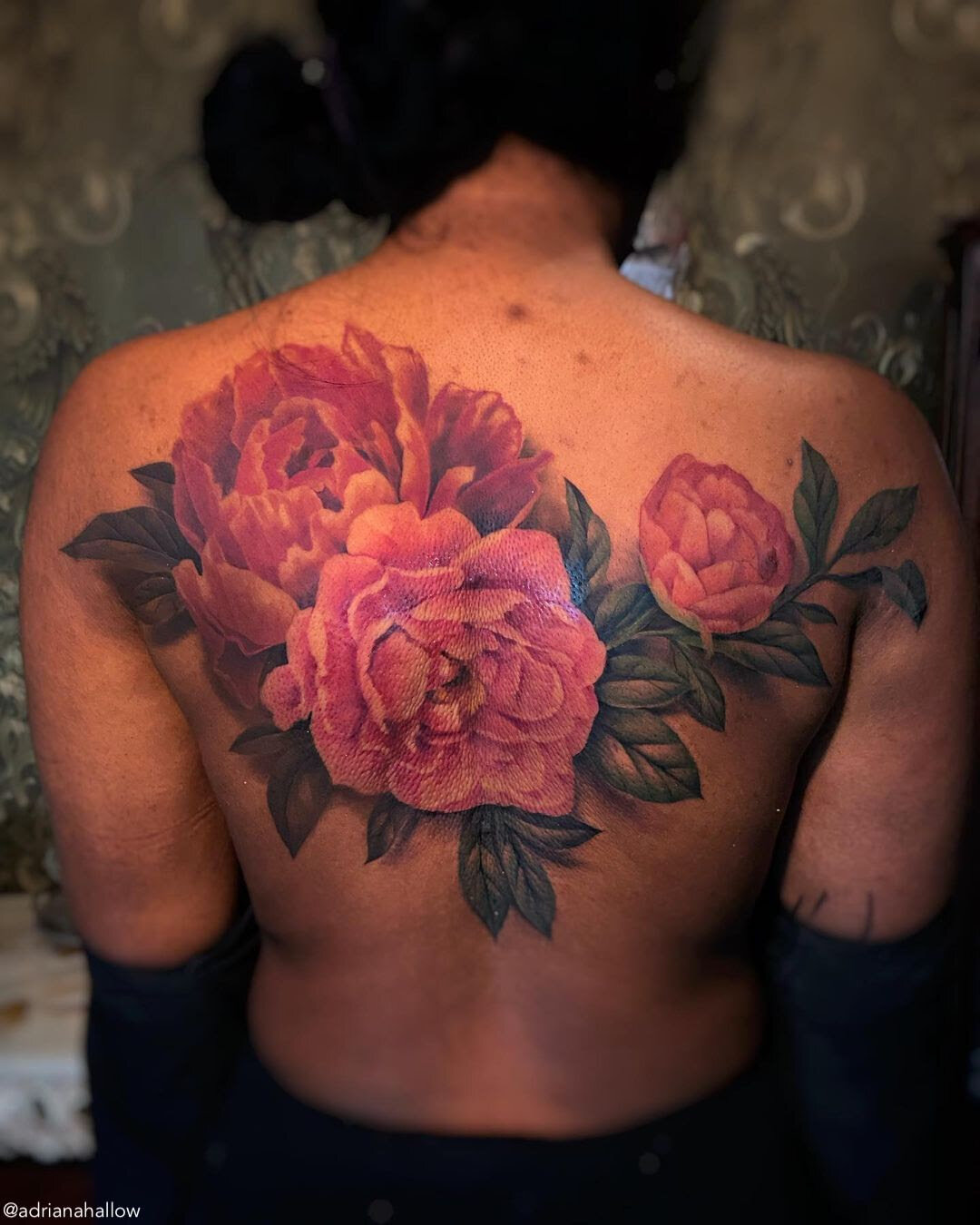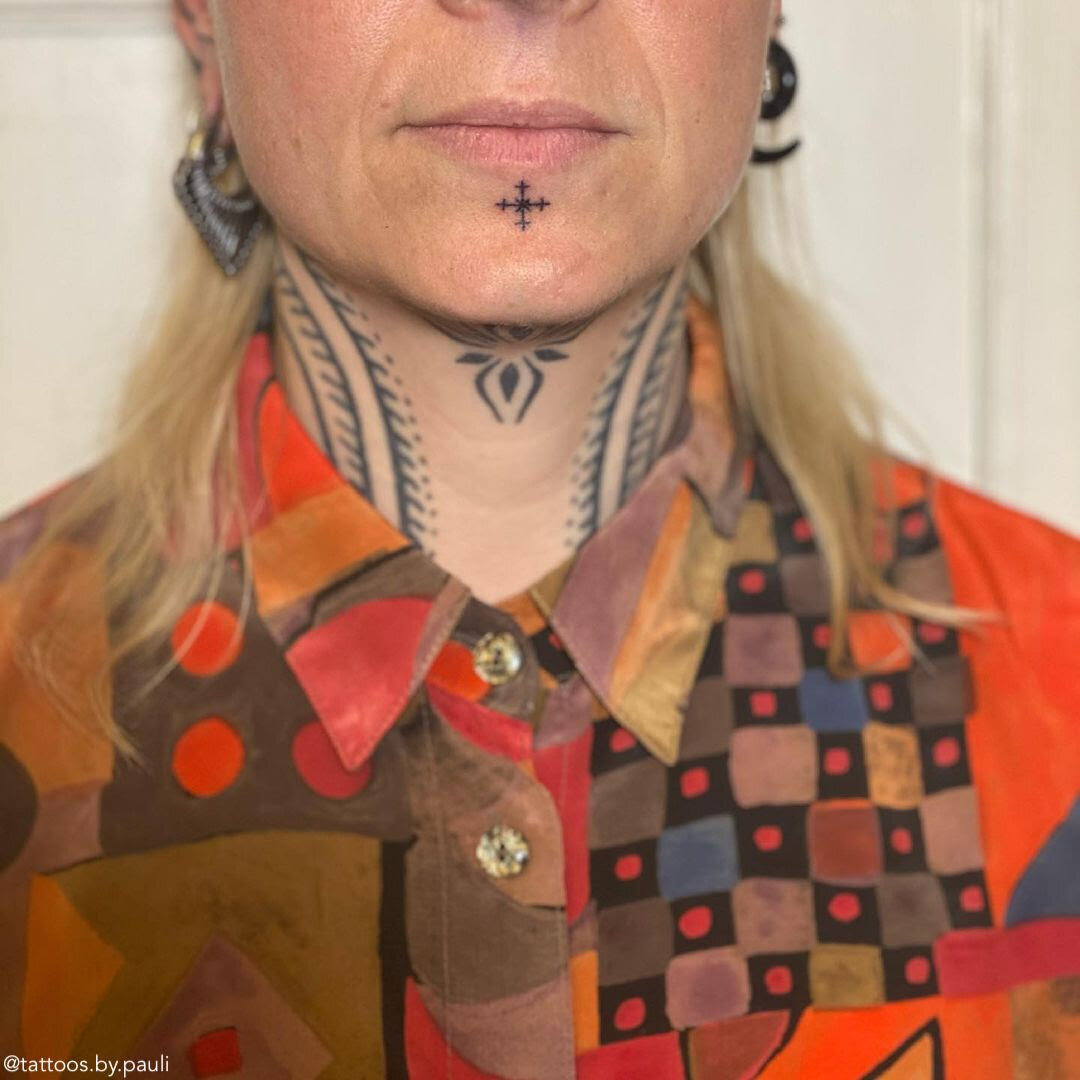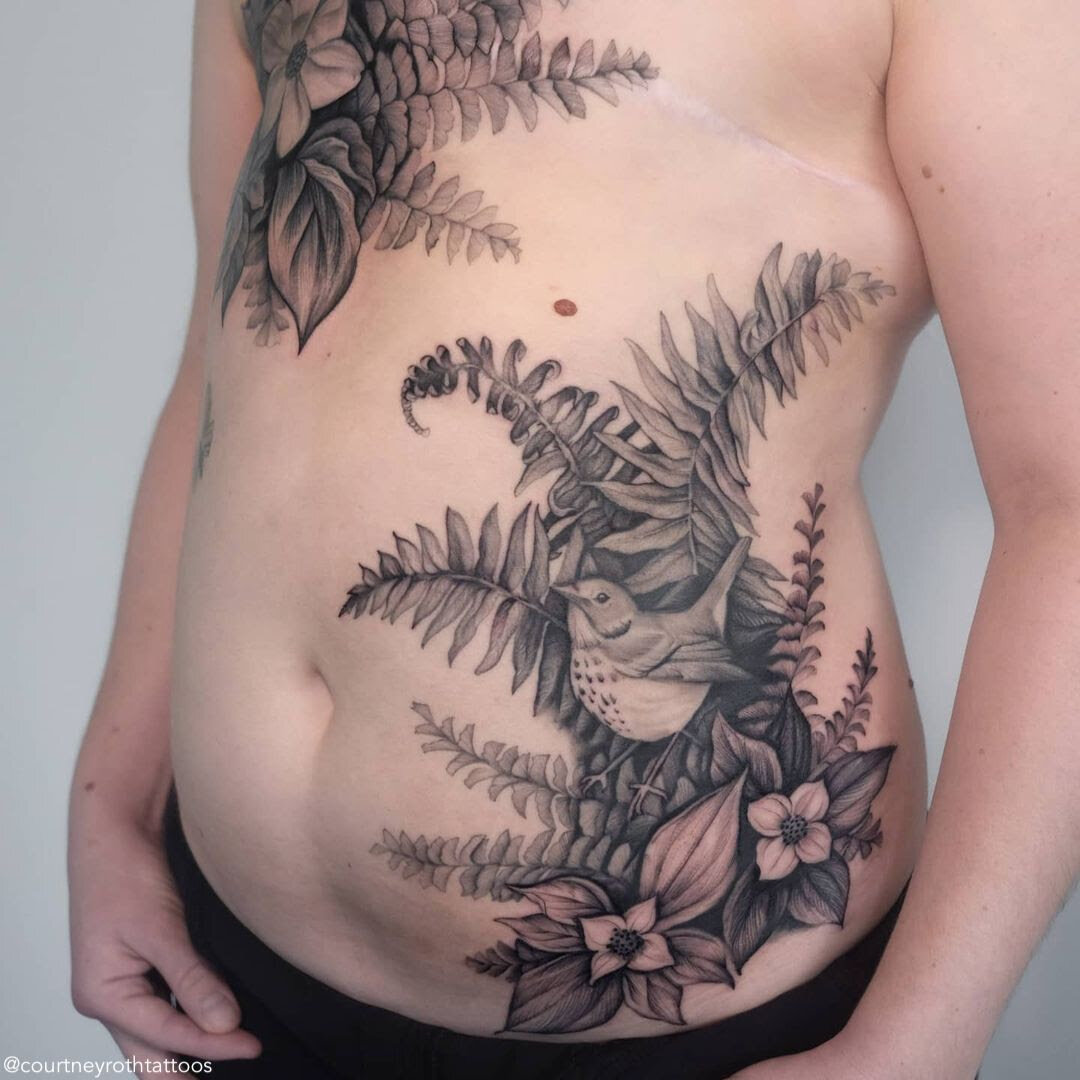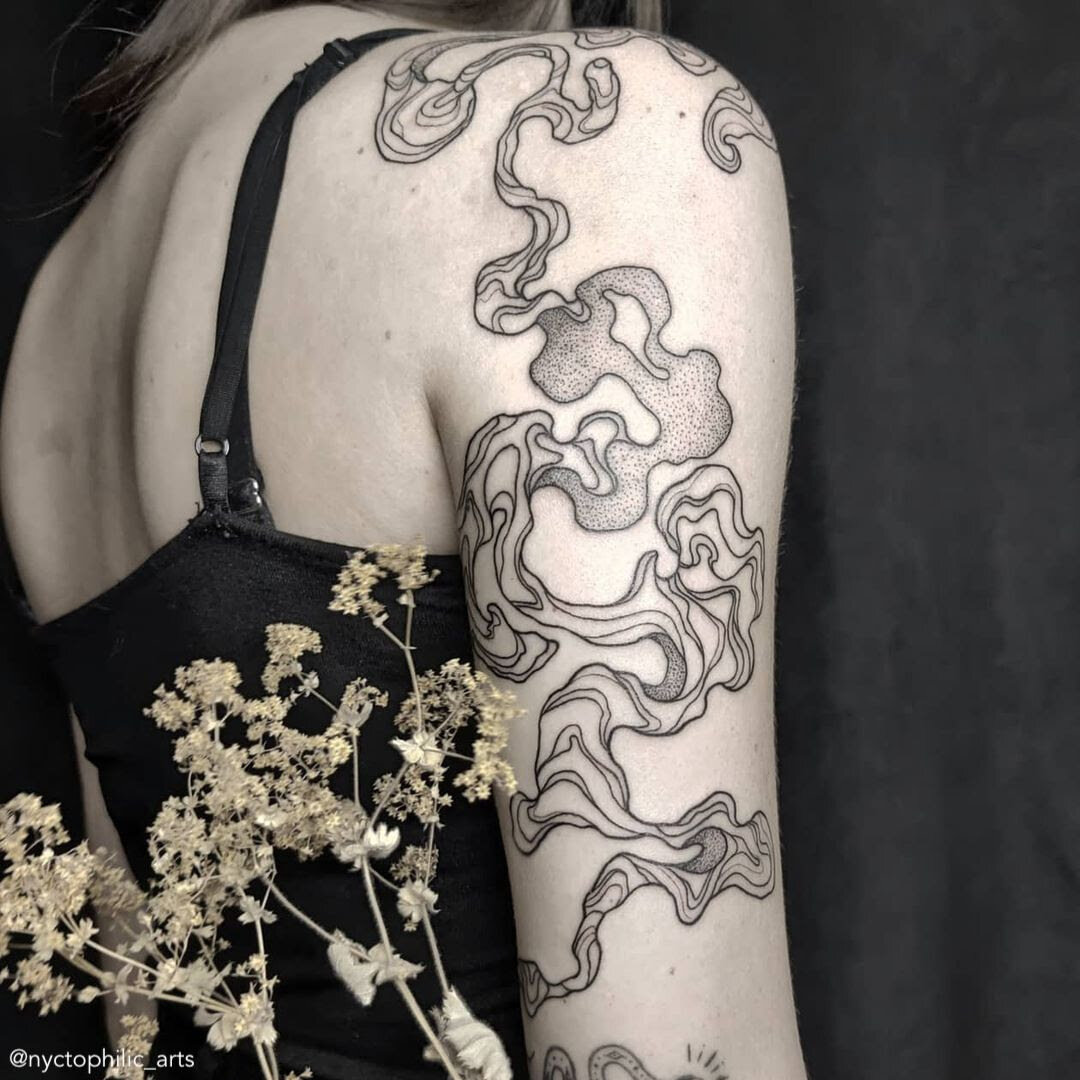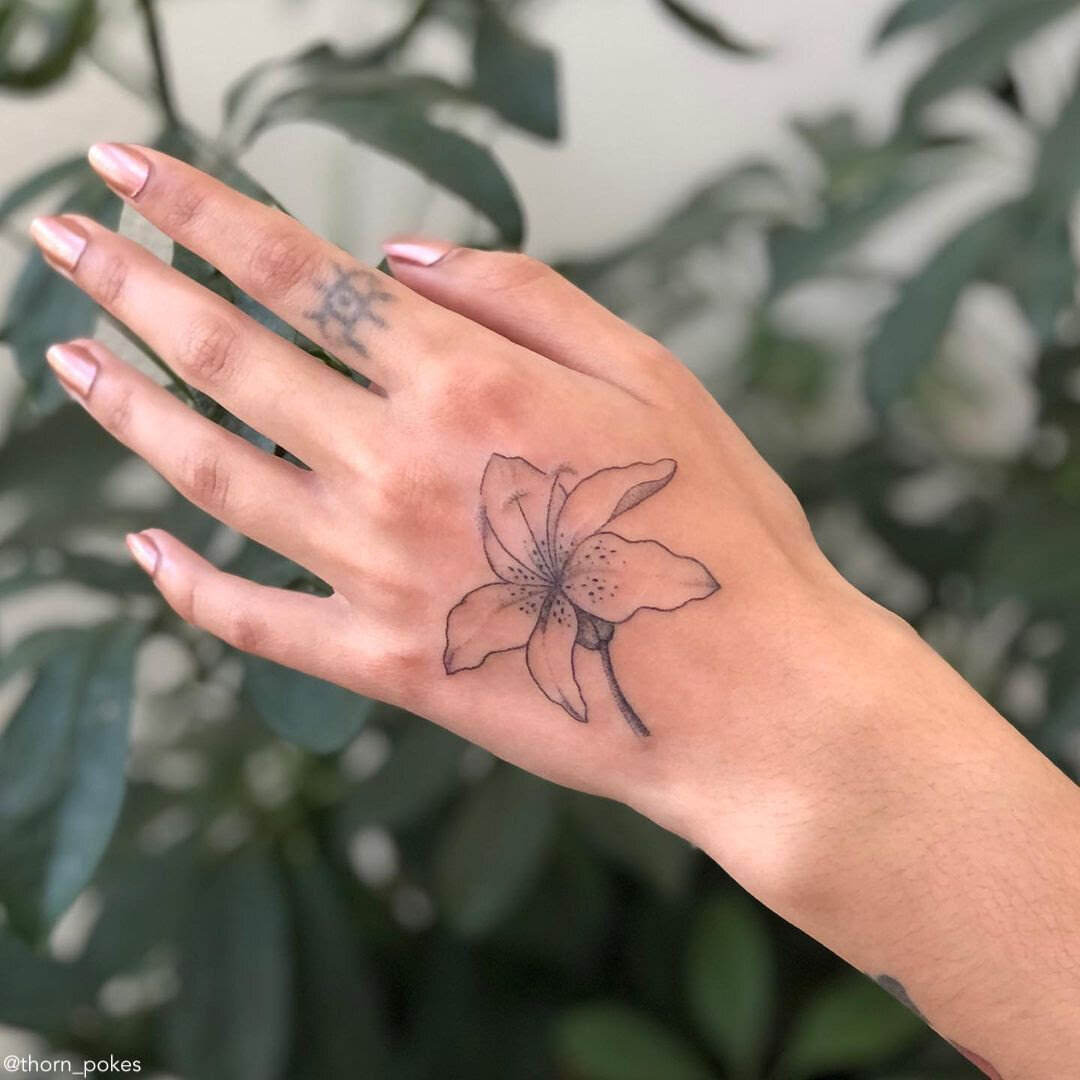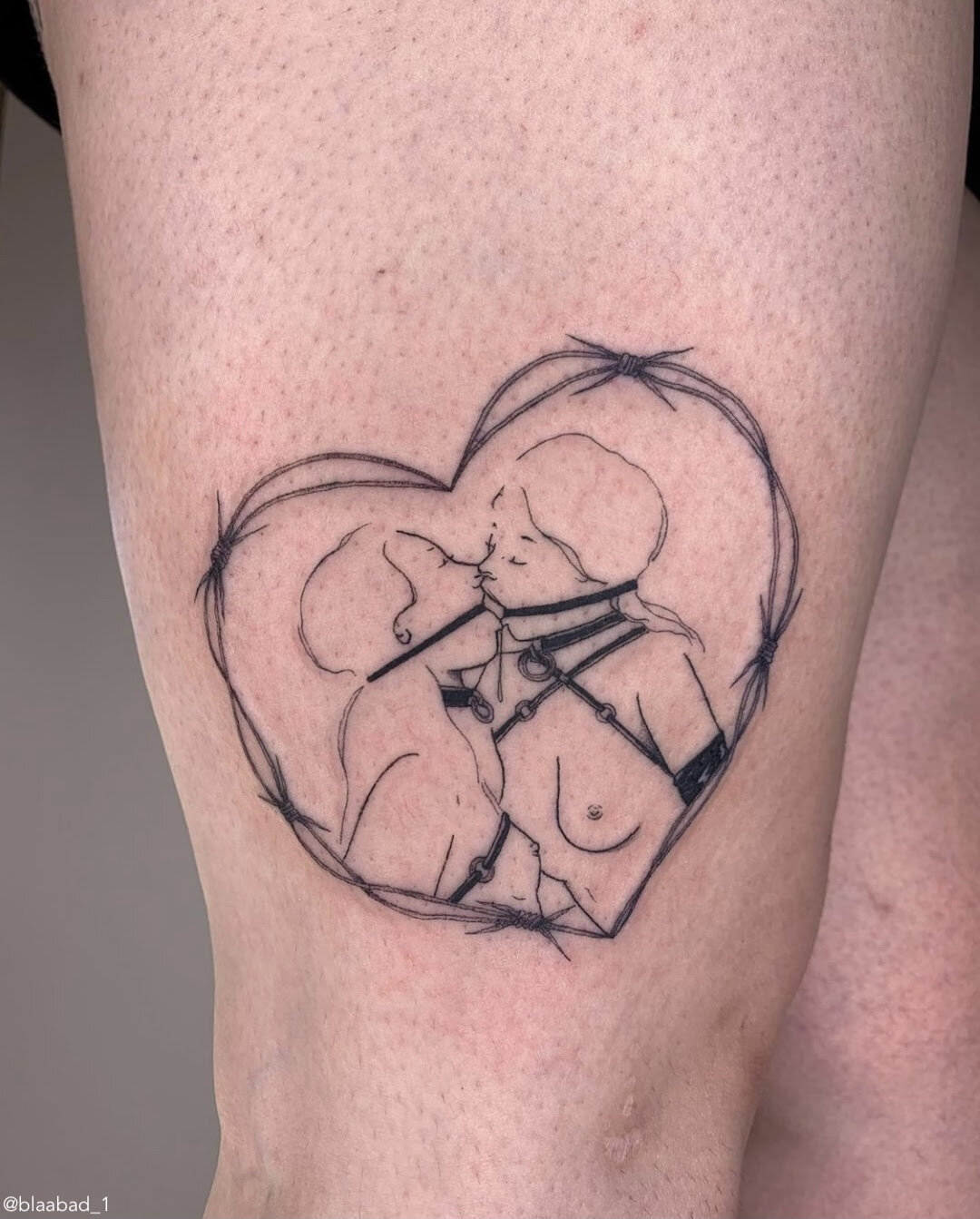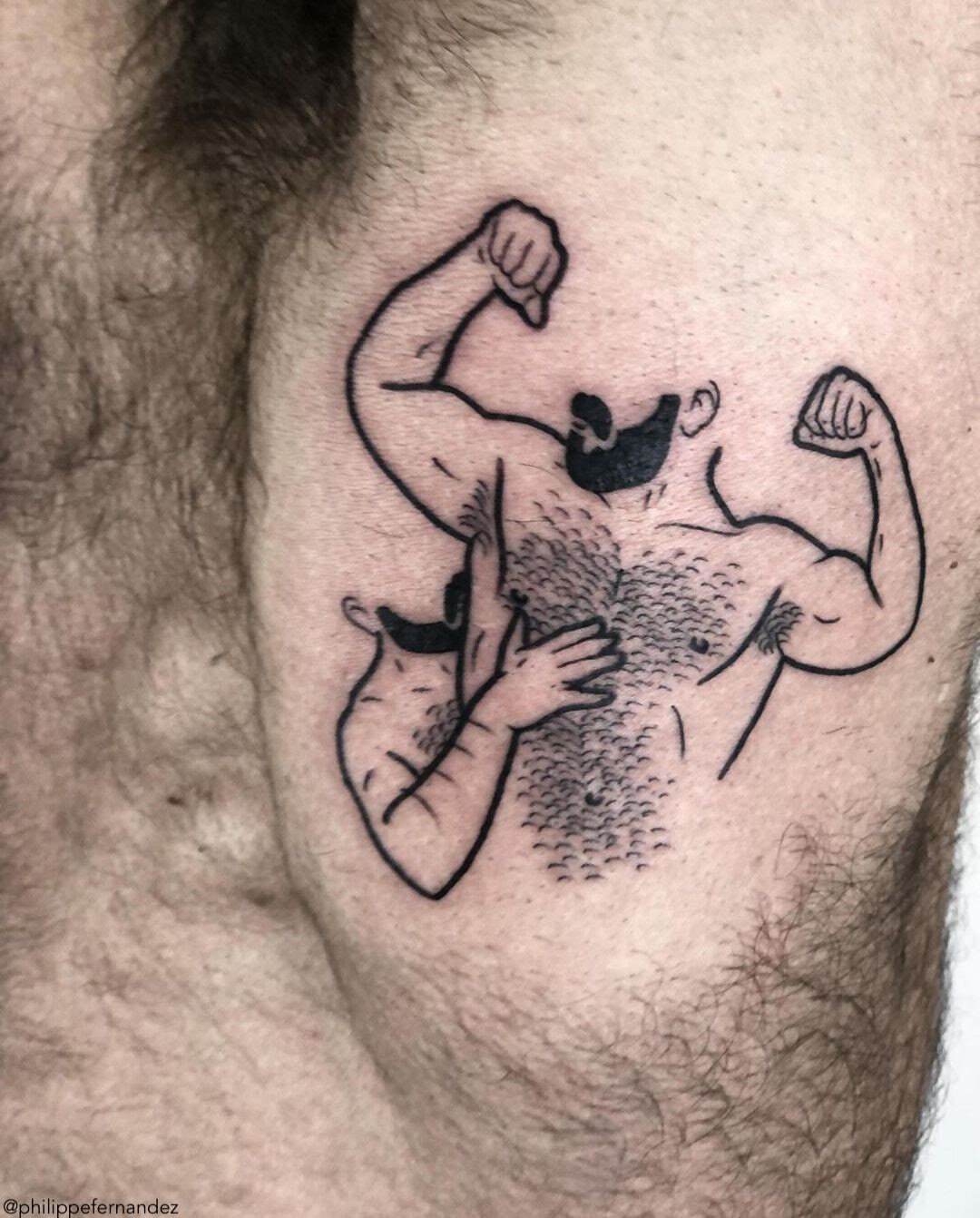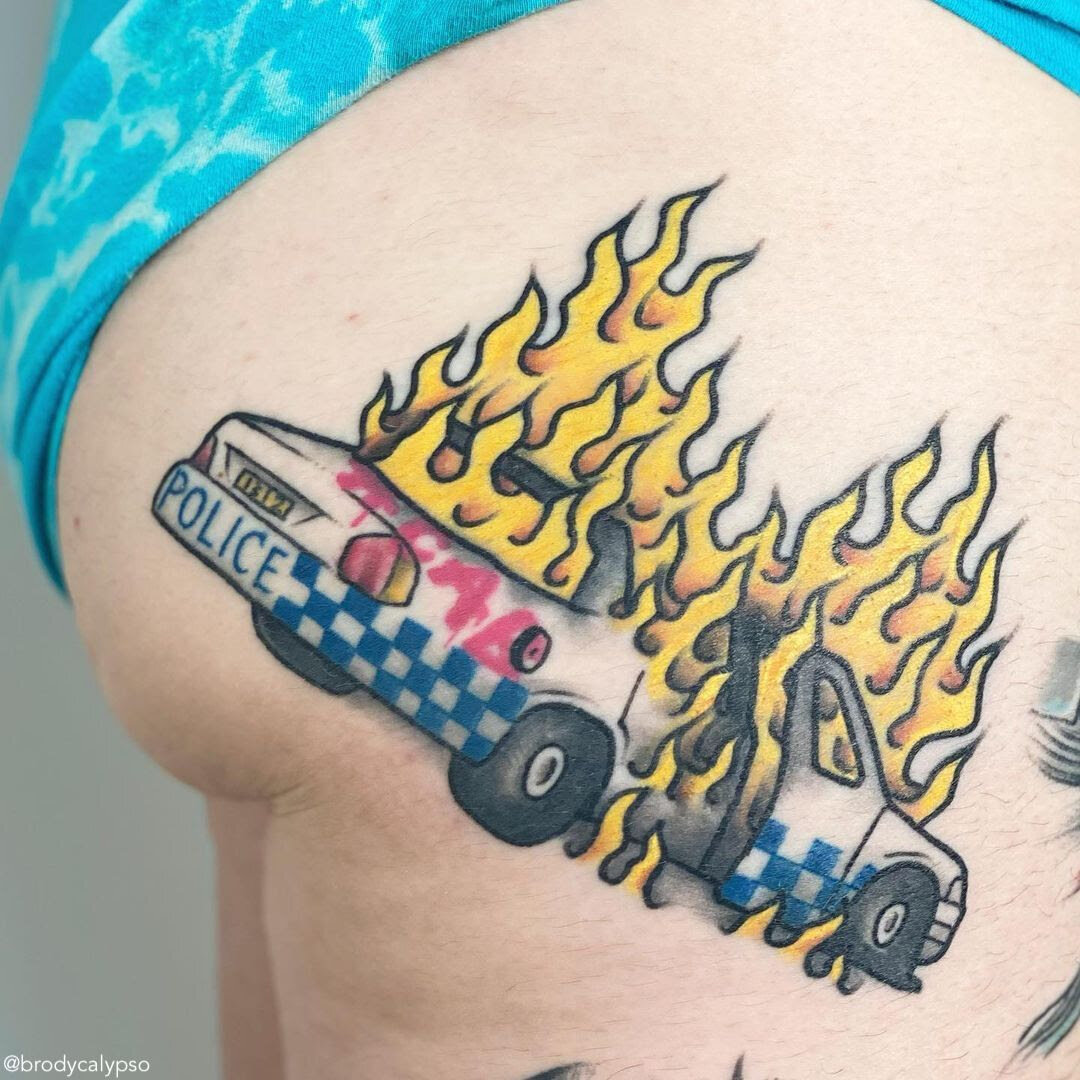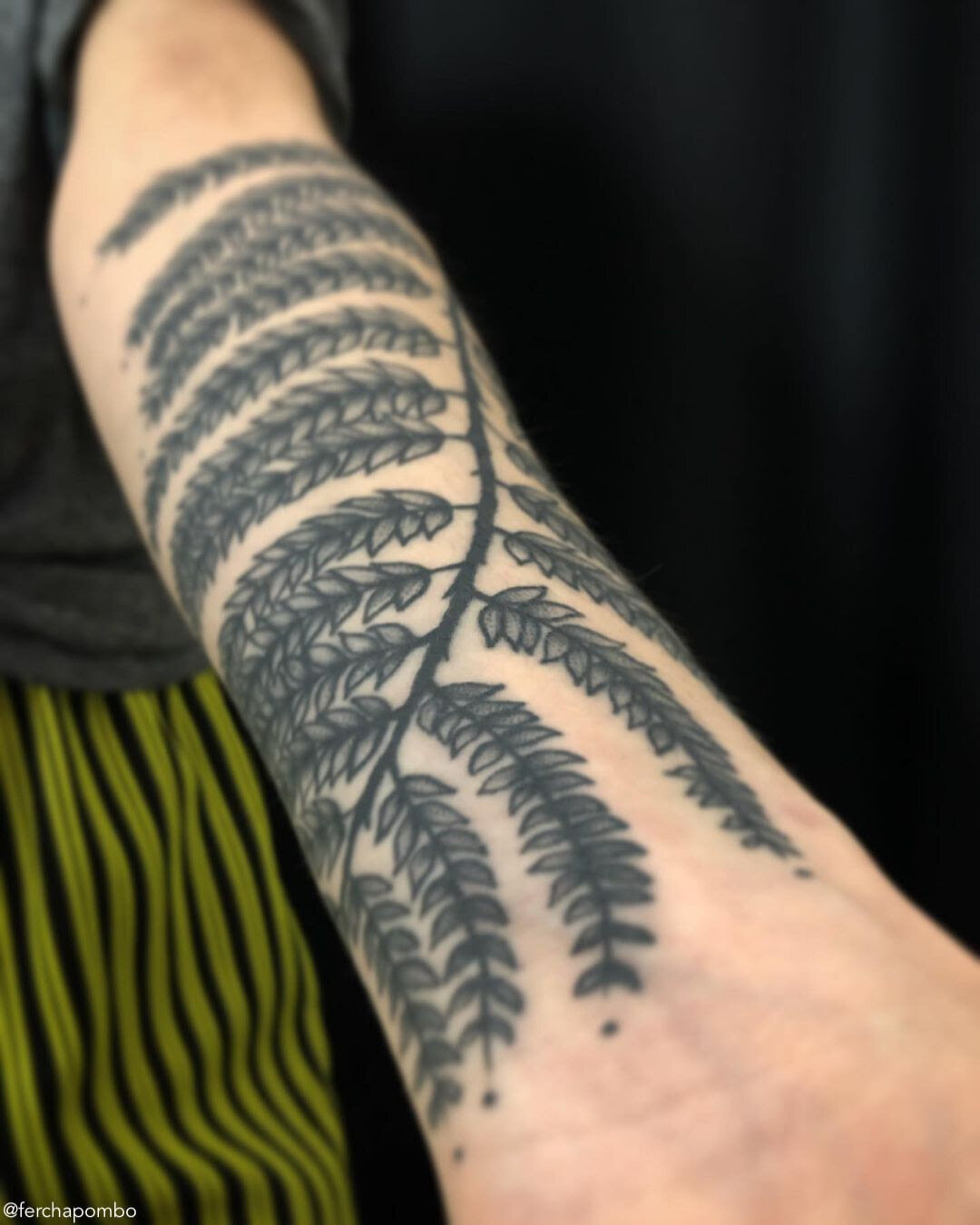PRIDE
AN UNDERGROUND CONVERSATION ON MODERN TATTOOING
Flowers in progress by queer artist @em16 - Brooklyn
PRIDE
Or, a varietal sampling of LGBTQ+ tattooing communities
I wrestled with how to approach Pride month in this newsletter. I want to wave the flag with joy and rebellion, but don’t want to do a surface-level, rainbow-filled obligatory post. (Now known as “Pulling a Target.”)
So today, I’d like to discuss the pros and cons of grouping queer tattooers together online. I’m sure it won’t be controversial or lead to heated commentary at all.
Healed snake and thorns by @phecristo - Berlin
NOT A MONOLITH
How can we celebrate the wildly varied spectrum of voices who, often, aren’t thematically tied beyond orientations?
In short, there’s no “queer” aesthetic. There are photorealists, geometric designers, traditionalists, ignorant style pioneers. The gradient of queer tattooing is the gradient of all tattooing, because non-straight artists are everywhere.
“I never think twice about whether I belong in tattooing or not,” Emma @thorn_pokes shares. “My focus instead is on being part of a culture that sees tattooing as intimate, trust-rich, and sacred. But I recognize that my identity as a Black queer person increases the chances that people who have not felt safe, seen, or represented otherwise in tattooing might feel those ways with me.”
Botanical work in progress by @adrianahallow - NYC
I do notice some patterns that pop up more in queer circles than others, though. Due to social and structural barriers, a lot of artists were denied access to formal apprenticeships, or otherwise felt unsafe in studios. For this reason, many younger queer artists are self-taught. Combine this with the philosophical and political rejections of traditionalism, and you’ll see more crudeness / “ignorant” style in queer spaces.
In background research for this piece, I spoke with a few artists (who asked to stay anonymous) who worked 3-5 years before they finally felt safe to be in a straight-run studio. Several years into their career was the first time they gained access to elders’ guidance on the trade.
But, it’s gradually changing, especially as queer-run studios expand. There are more LGBTQ+ elders who can pass on their wisdom. Compare that to 20 years ago, when you could count on one hand the number of openly gay or transgender tattooers.
Poetry backpiece by @framacho - Brooklyn
"Sun belly" by @tiarettee - Baltimore
Collaboration by @g.orne x @atxetattoo - Berlin
PROS / CONS OF UNITING QUEER ARTISTS
Arguably, the largest IG page that unites this mixed community is @queer_tattooers, of which I was an admin for a few years. When organizing that page, I felt so happy to offer safer options to vulnerable clients, and to see how many queer artists are out.
And, because we’re all so different, we disagree a lot. That’s the down side of art pages whose theses aren’t about the artwork.
I spoke to Ciara @la__tigresse__, who used to moderate a page centered on queer people of color. “I don’t run @qpoc.ttt anymore, I decided to let it go dormant. I started to worry about ... people who’d be looking for a tattooer based solely on race, not style or really anything else. It was leading to some tokenizing, and at times upsetting interactions with poc and qpoc tattooers I spoke to.”
Ornaments for Divya by @la__tigresse__ - Calgary
Ornamental patterns by Touka Voodoo @stockholmalternative - Stockholm
So, is the solution to intersect queerness with aesthetic? Non-binary artist Sterki @allkindbodies is experimenting with just that.
They created the #queertraditional hashtag to separate their work from the misogynistic, phobic traditionalists. In this way, style and safety can be centered together. “I enjoy a classic tattoo,” they explain. “The art of drawing flash by hand, the recognisable imagery... As a white westerner, it is a tattooing tradition I can modify and find new tones in without culturally appropriating. I started using the hashtag #queertraditional to collect imagery and claim space. I would love for more tattooers to join in!”
Traditional flash sheet by @allkindbodies - Berlin
PROS / CONS OF BEING PUBLICLY OUT
Being out is a privilege, point blank period. I know queer tattooers from Kenya and Egypt who were outted, and then arrested because of it.
Even in safer nations, it’s still a fraught experience. And social media spaces unfortunately don’t have our backs. Despite all the rainbow hashtags on Instagram this month, they’re still out here censoring artists who make very transgressive, very queer art.
“Navigating sex and kink positivity in a policed social space is stressful and risky,” Brit @blaabad_1 tells me, just days after Instagram deactivated her original @blaabad page. “It’s difficult to tell which exact pieces of art will end up reported or banned. The game only gets more difficult the more exposure you have because it just increases the likelihood that someone will see something you post and not like it or feel comfortable with it.”
If it is socially and systemically safer to be out, though, visibility can save lives. It shows fellow queer folk that they’re not alone.
Trans artist @ferchapombo, for example, was very open about their pregnancy on Instagram. It gave many fans of their artwork a first-time look at what trans parents go through, and offered representation to other trans folks in the crowd. “Pregnancy was a very intense metamorphosis,” they share. “I enjoyed pregnancy a lot, but as my baby grew, so did my dysphoria. There’s no way that people separate you from being a ‘mommy,’ it doesn’t matter what your gender expression is. Medical institutions are not ready to treat trans people, or talk about their bodies, or understand why I had a mastectomy. But it was wild to have my baby, it was huge. I feel like I became better for it, that I can do much greater and stronger things with my body than I could before.”
This kind of public vulnerability can educate fans, offer solidarity to people who can’t be out, and in general just normalize experiences that rarely get coverage.
TATTOOING AND QUEER EMBODIMENT
For people whose bodies are heavily policed, tattooing can be such an empowering act. We choose how and when to other ourselves. And in doing so, we remind the world, “this is my house.”
“I think my art can be really transformative for my clients for two reasons,” @blaabad_1 says. “One: The art itself, and what it represents in a world that lacks a lot of social, physical, sexual, and gender diversity. [Two]: I myself am a very sex and kink positive, gender non-conforming queer. I think there is something extra special and connective about having someone alternative who represents your core values.”
Sigil between top surgery scars by @tere_tattooing - Malmö Sweden
She / Her pronouns by @bibi.tats - Vancouver
“I was meeting a lot of young people in the queer community who were having issues trying to find a safe space to get tattooed,” @tina_lugo13 explains, “especially with self-harm or transitioning scars.”
Tina, @em16 and @brody_polinsky all shared with me and Huffington Post why they offer discounts for trans folks seeking scar covers. “It really is healing work,” Em says, “for me, and for a lot of other people working in these safe spaces.”
“I think you are never ‘over’ the evolution of this relationship with the body,” Fercha continues, “because we live in a world that tells us how our bodies should look, be and function. But I have learned to love myself more and more.”
Tori Amos quote by @lee__dangelo - Toronto
That’s a wrap!
This is an unpaid labor of love, as it's always been. I welcome your feedback, corrections and contributions. Full disclosure: I was compensated for the Huffington Post article in 2019. I have worked with Em16, Tina Lugo and Brody Polinsky in the past, and Fercha Pombo in the present. None of them are compensating me for these features.
Please buy me a coffee if you're a cutie!
PayPal: tattrx@gmail.com / Venmo: @chillpolyamory
With love,
Morgan
-
All image copyrights are retained by the artists. All text copyrights reserved by Tattrx LLC.
To unsubscribe, just reply here and I'll remove you from the list.
